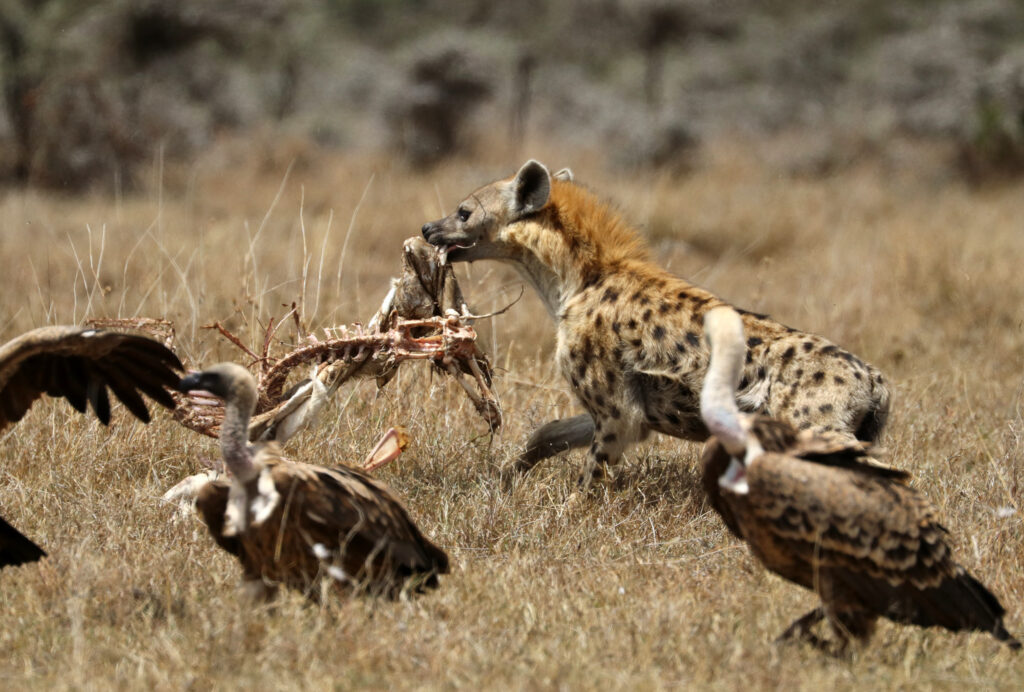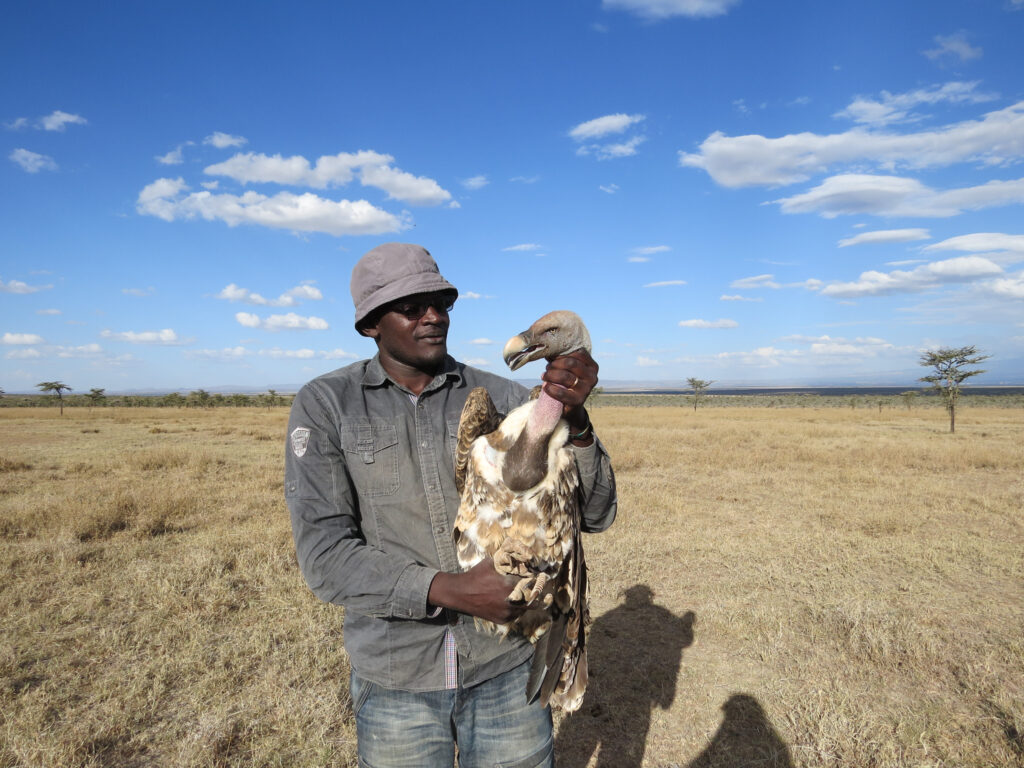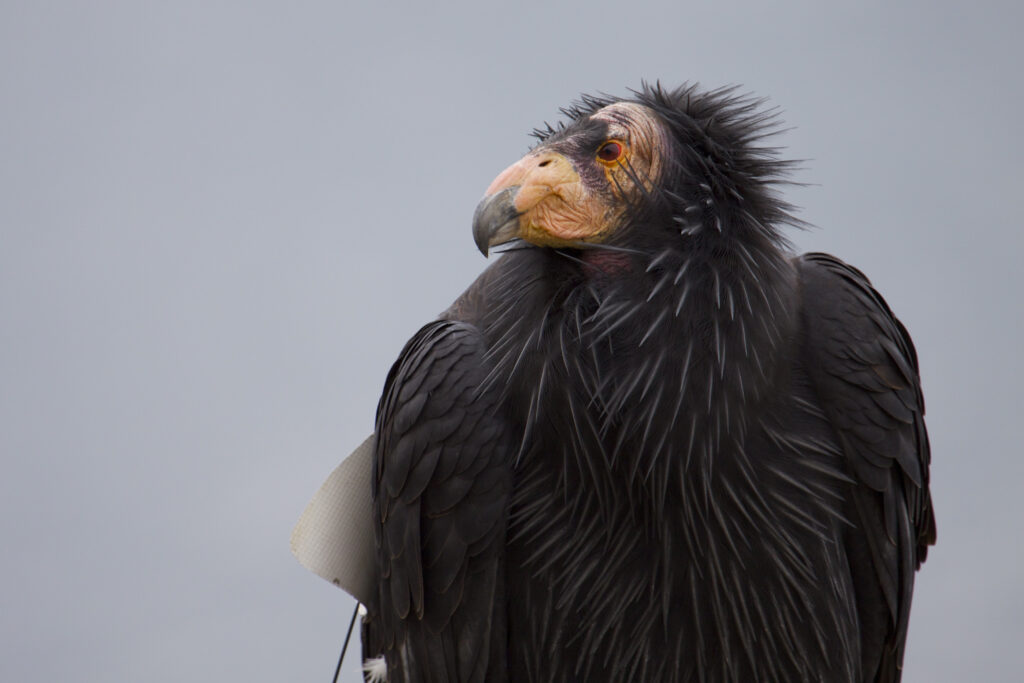
Vultures can clean a carcass in a few hours, but without them, that carcass could stay around for days.
My refrigerator’s “I ❤️ Vultures” sticker is my daily reminder of how grateful I am for vultures. As ancient taxa, their historical legacy exemplifies the interconnectedness of wildlife, people, and the environment. Vultures are scavengers that clean up dead animals, removing waste and slowing disease spread within the animal kingdom. During the Pleistocene era, California condors ranged from the Pacific Coast to Florida to Canada. The largest of the North American vultures, they soared over mammoths and feasted on giant sloths while being an integral part of Native American heritage.
Vultures likely play an important role in helping to prevent pathogen spillover events to humans, too. But the longer a carcass stays around, the greater the likelihood of disease transmission by late-arriving scavengers—such as jackals and dogs—that may feed on it.

During San Diego Zoo Wildlife Alliance’s (SDZWA) Wildlife Wednesdays in 2020, I talked about the ways African vultures are intentionally and unintentionally exposed to large amounts of pesticide during retaliatory poisonings. People who have lost cows or camels to predators—lions, hyenas, and leopards—sometimes retaliate by lacing the remaining carcass with pesticides to kill the offending predators. Unfortunately, avian scavengers—vultures and eagles—are the first to locate those carcasses and the first to be poisoned. These ecosystem health guardians of the savanna are imperiled. Through our partnership with The Peregrine Fund and Darcy Ogada, Ph.D., SDZWA supports community-driven educational programs about why poisoning livestock not only hurts critical disease-controlling wildlife like condors, but also humans and other livestock, as pesticides spread from carcasses to the soil and grass, and even contaminate water sources.

The story of poisoned vultures is not new to Californians. In the 1980s, just 22 California condors survived, and the species appeared doomed. SDZWA played a major role in protecting and propagating condors, helping to establish a world-class breeding program that now supports more than 500 condors from Pinnacles National Park to Arizona and Utah to Baja California, Mexico. The SDZWA Disease Investigations team, then led by Bruce Rideout, DVM, Ph.D., helped to determine that condors feeding on hunting remains (such as “gut piles”) were dying due to lead poisoning. The culprit was lead ammunition, leading SDZWA to support California’s Assembly Bill 711, which requires the use of nonlead ammunition for animal hunting in California.

While efforts to reduce lead in the environment are ongoing, new efforts to expand California condor ranges from inland to the coast have raised new alarm bells, for both vultures and humans. We've known for some time now that the chemical pesticide DDT, now banned, was linked to eggshell thinning that led to population collapses of birds of prey. We also know DDT exposure can cause reproductive harm to animals and humans and is linked to cancer in marine mammals, which is alarming given the recent discovery of over 27,000 barrels of discarded DDT in the San Pedro Basin next to Santa Catalina Island.
Along with partners across the state, SDZWA’s Christopher Tubbs, Ph.D., and Dr. Ignacio Vilchis, Ph.D., and San Diego State University’s Eunha Hoh, Ph.D., are leading efforts to understand how Southern California’s high levels of DDT and related compounds in marine mammals are impacting the reproductive health of California condors that scavenge on the contaminated remains of stranded dead marine mammals, including California sea lions, gray whales, and harbor seals.
Vultures hold cultural and spiritual importance for some communities, alongside their likely role in regulating disease transmission at carcasses, making them critical for maintaining the holistic health of ecosystems, which includes the environments inhabited by humans and animals. SDZWA is working on multiple fronts to protect this endangered group of birds.
Our California Condor Conservation Partners
Arizona Game and Fish
California Department of Fish and Wildlife
Centro de Investigación Científica y de Educación Superior de Ensenada, Baja California (CICESE)
Comisión Nacional de Áreas Naturales Protegidas (CONANP)
Grand Canyon National Park
Instituto Nacional de Ecología y Cambia Climático
Los Angeles Zoo
North American Non-lead Partnership
Oakland Zoo
Oregon Zoo
Pinnacles National Park
Santa Barbara Zoo
The Peregrine Fund
The Yurok Tribe
U.S. Fish and Wildlife Service
Ventana Wildlife Society
Zoologico de Chapultepec
Caroline Moore, DVM, Ph.D., is a Steel Endowed Pathology Fellow and Veterinary Toxicologist at SDZWA.
Header photo: white-backed vulture Gyps africanus by Darcy Ogado




